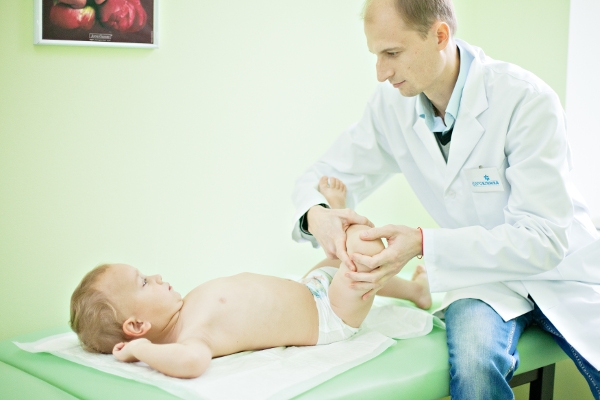A valgus is easier to treat and surgery is only required in extreme cases. The focus is on therapeutic exercises, physiotherapy and massage, which should be done regularly for the first 2 years. The course consists of 10 sessions spaced three months apart. An orthopedic insole with a special supinator is selected. Toe correctors and tapes are also prescribed. Swimming has a positive effect on the development of the muscles and skeletal apparatus of the legs at the time of the disease. In the water, complete relaxation occurs and the limbs are properly aligned. Gymnastic exercises include:

Varus and valgus deformities
Valgus is a common problem in today's generation of young people. Valgus and varus are orthopedic diagnoses that are often made in small children after the first year of life. They look similar to many parents, but have completely different causes, symptoms, and are treated differently. Distinguishing between these diseases is not easy, but it is possible. To do this, it is necessary to know the main symptoms and causes of the disease, as well as pay attention to the development of the child's feet. Timely examination by an orthopedist will help to identify the disease at an early stage.

Comparison: how to recognize foot deformities?
What are the main differences between varus and valgus - this is a common question from parents who closely follow their children's first steps. Of the two foot pathologies, valgus deformity in children is more common and less dangerous than varus deformity. It does not require such a long and drastic treatment. The orthopedist diagnoses the foot deformity in the first year of life, as soon as the child begins to move.
Why do they arise and how do they express themselves?

The varus deformity is more common congenital, has a hereditary predisposition and is rare. Valgus is caused by weakness in the connective tissue and joint apparatus. High loads when standing, walking or jumping lead to a curvature of the arch of the foot, followed by changes in the ankle and knee joints. A lower limb cannot develop both diseases at the same time - an important nuance in the diagnosis. Valgus development is slower and symptoms appear insidiously. Factors that contribute to the development of a foot deformity:
- CEREBRAL PALSY;
- disorders of the nervous system;
- tumors;
- metabolic disorders;
- abnormalities of the thyroid organ;
- dropping out of school;
- overweight;
- ill-fitting footwear.
The main difference lies in the positioning of the foot during the movement. With valgus, the child is usually on the inside of the foot. The feet take an X shape. In varus, the child walks with a tight grip and rests more on the outside of the foot. The stress on the knee joints is unevenly distributed and eventually the knees become crooked. The feet take an O-shape.
Read more:Parents should carefully monitor the position of their child's feet so as not to overlook the condition. Any foot deformity is an urgent reason to see an orthopedist.
Goals, tasks and working methods of the orthopedic dentist
Dental tissue is a part of our body that does not recover with age and over time. Therefore, if a person loses one or more teeth, sooner or later he will have to visit a prosthodontist. When receiving a patient for the first time, the prosthodontist must draw the patient's attention to the most reasonable and correct treatment methods appropriate to the situation. The duties of such a doctor generally include:
- Comprehensive treatment of traumatic conditions of the dental or jaw system, correction of anomalies of the masticatory system, whether acquired or congenital;
- Restoration of the beauty and function of the tooth and jaw system, as far as this is possible in the event of a premature loss of units.
- Prevention of periodontal diseases, pulpitis, periodontitis or advanced caries.
An orthopedic dentist can also be called in if you want to correct your bite or remove an offending crooked tooth. After each treatment, the dentist gives detailed advice to all patients which, if followed, will help patients heal better after implants or braces are placed. For each individual patient, the specialist must choose the preferred, most effective and least painful option. There are several effective options for treating gum and jaw problems: microprosthetics, removable dentures and fixed models.
microprosthetics
This area of prosthetics is a method of correcting a single broken or cracked tooth, which can be effective in cases where the tooth is partially damaged or destroyed. This prosthesis option is only possible if the root and nerve of the tooth have not been removed.
There are two ways to provide dentures for broken incisors or canines:
- Veneers, also known as dental overlays. They usually consist of high-strength ceramic masses that come as close as possible to tooth enamel in their overall appearance. Veneers are glued to the tooth with a special cement that does not cause allergic reactions. Onlays require the removal of tooth structure to make room for cavity regrowth.
- inlays They are similar in composition and appearance to traditional fillings, but have a tighter fit because they are made from an exact model made beforehand. This method can effectively restore the lost tooth shape and is usually used on the most stressed molars.
- Shoes for valgus of the child's foot.
- Valgus flatfoot (valgus flatfoot).
- Shoes for hallux valgus.
- ICD 10 chalgus valgus.
- Equino valgus.
- Orthoses for valgus in children.
- Massage for flat feet.
- Shoes for valgus deformities in children.
